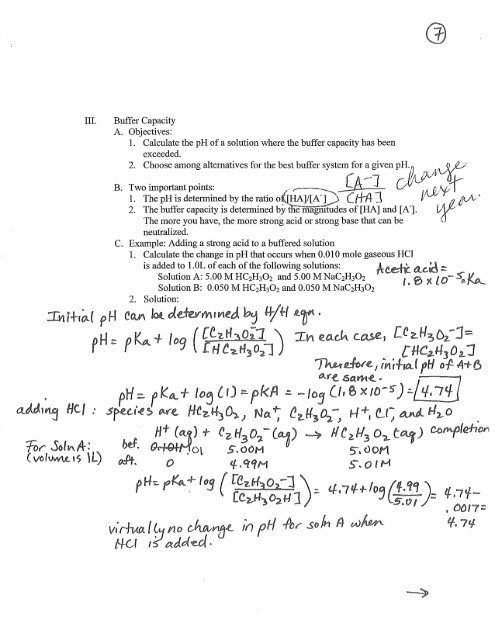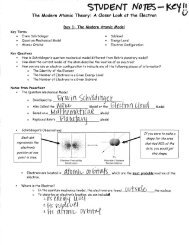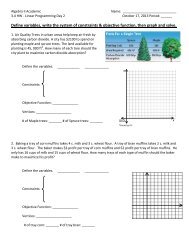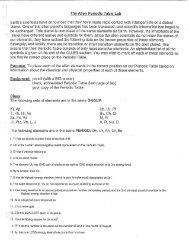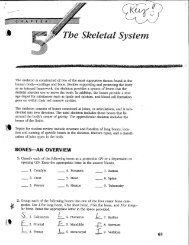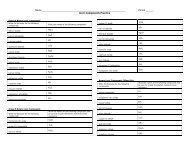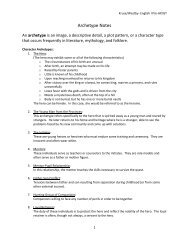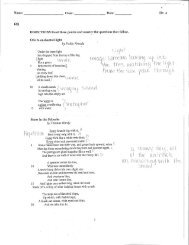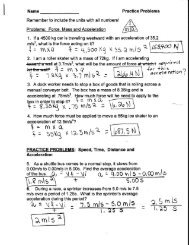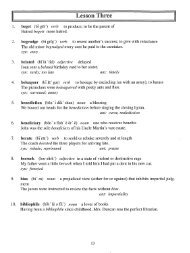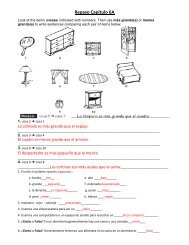Class notes
Class notes
Class notes
You also want an ePaper? Increase the reach of your titles
YUMPU automatically turns print PDFs into web optimized ePapers that Google loves.
III.<br />
Buffer Capacity<br />
A. Objectives:<br />
1. Calculate the pH of a solution where the buffer capacity has been<br />
exceeded.<br />
2. Choose among alternatives for the best buffer system for a given pH. n ÿ ÿ ,ÿ<br />
Q<br />
2V_a t+ÿl fÿ f4<br />
pH:<br />
B. Two important points: z ÿ===ÿ-'--- ÿ C,/ÿ .- ÿ kÿJ ]<br />
1. The pH is determined by the ratio oÿ,[HA]/[A- ] 2ÿ ÿ[-ÿÿ !/k,ÿ r ÿ ÿ,Aÿ'<br />
2. The buffer capacity is detennined by t'h-ÿnSaÿnltuÿ des of [I-IA] and [A-]. ÿZÿ<br />
The more you have, the more strong acid or strong base that can be 0<br />
neutralized.<br />
C. Example: Adding a strong acid to a buffered solution<br />
1. Calculate the change in pH that occurs when 0.010 mole gaseous HC1<br />
is added to 1.0L of each of the following solutions: ÿÿ dkÿl'ÿ<br />
Solution A: 5.00 M HC2H302 and 5.00 M NaC2H302 I, ÿ N t ;- ÿ<br />
Solution B: 0.050 M HC2H302 and 0.050 M NaC2H302<br />
2. Solution:<br />
# ÿ + io9 ( rÿ h zn ÿaÿ, cÿ, Lo aÿ3czJ=<br />
£r4 g.zÿ430ÿ-ÿJ . , crNCx1430zÿ<br />
: - Ioq ÿ¢, ÿ ×/0-s') :<br />
-ÿ eÿ43 oÿ_ eÿ) eoÿplÿbÿ<br />
if, Oopl<br />
5ÿ,OIM<br />
4b,- son ÿ ÿÿ<br />
vSoOÿ /" , 0017=<br />
q, vg


